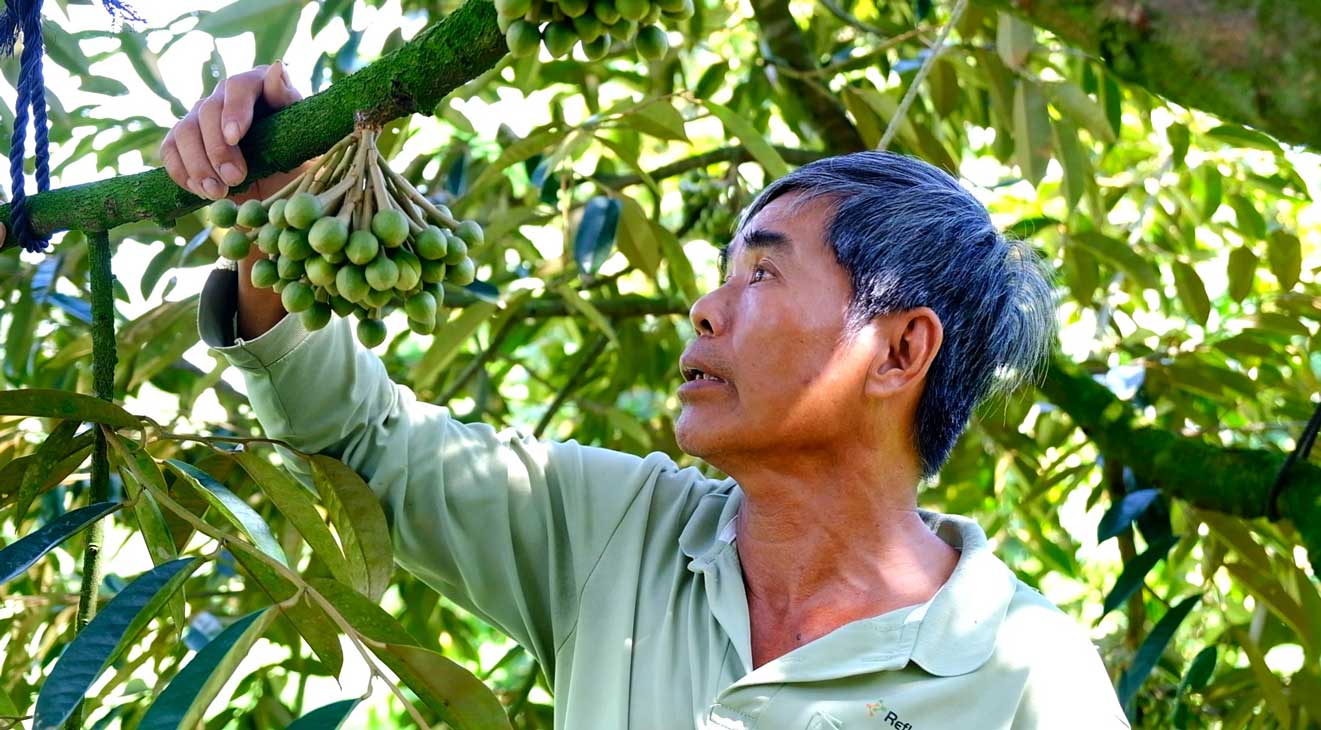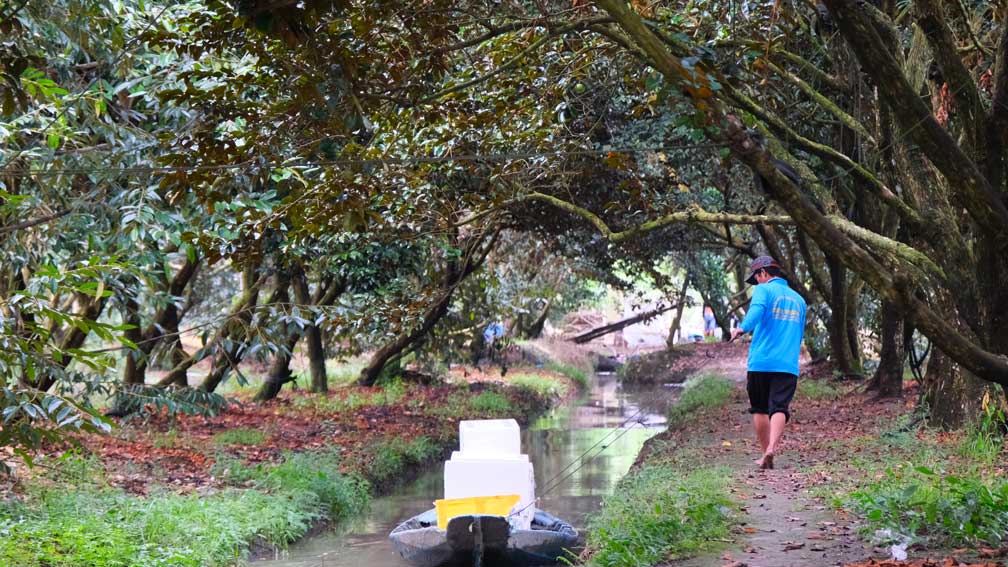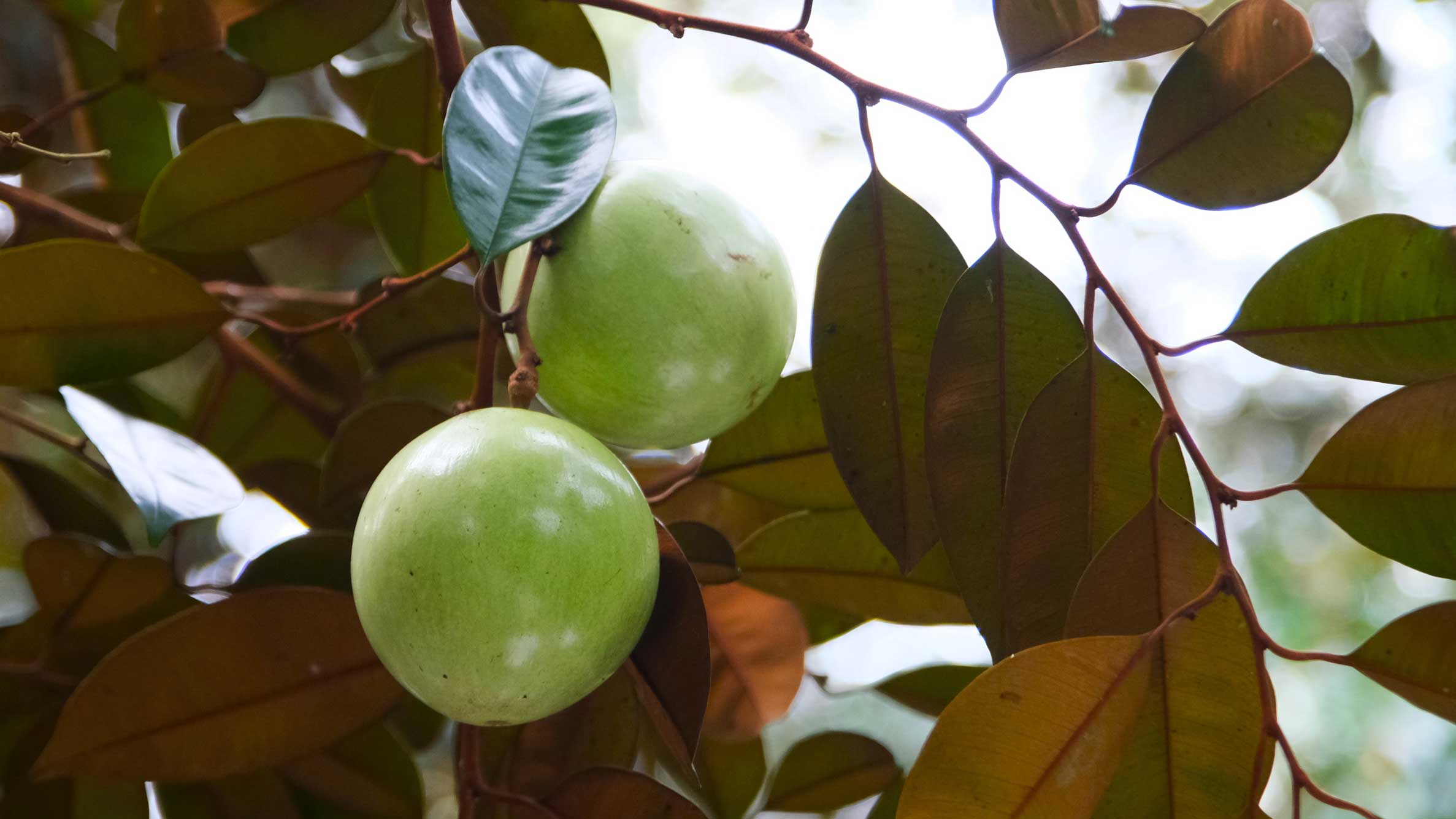High profits come with risks
In addition to producing in the right season, many farmers, with their own experience combined with the application of technical measures, have carried out off-season and off-season farming. This helps them increase the selling price of agricultural products but comes with many risks due to unfavorable weather. Most recently, the case of durian trees.

Mr. Nguyen Van Tai (Phong Dien district, Can Tho city) said that this year's durian crop, he worked half the crop earlier with the hope that durian would be sold at a high price. Due to the off-season crop, when the trees were in the flowering and bearing stage, they encountered continuous night rain for many days, reducing durian output by about 40%.
Also facing the situation of heavy rain at night when making durian in the early harvest, Mr. Huynh Vania (Phong Dien district, Can Tho city) shared: "The period of durian preparing to bloom, when it rained for 3 days and nights, caused the loss rate to be nearly 100%, I had to re-work the second batch. The cost of care has increased.
According to Prof. Dr. Tran Van Hau - former senior lecturer at Can Tho University - when farmers produce fruit in the off-season, especially durian, the first thing to do is respond to unfavorable weather, by applying techniques. This requires farmers to proactively improve their knowledge as well as need more timely guidance and support from the agricultural sector and authorities.
Ensuring supply for the market
Talking with Lao Dong, Master Le Thanh Tung - Vice President of the Vietnam Gardeners Association - said that province-based production is not only for high-priced agricultural products but also to ensure a steady supply of goods in a year, meeting consumer demand.
In terms of prices, if there is only one season (the season), the agricultural product output provided at the main season will exceed consumer demand, leading to a decrease in prices. Not cultivating at regular rates also leads to difficulties in meeting a stable source of goods for supermarkets as well as export businesses.
Spreading crops is to ensure that the supply chain of goods, including manufacturers, cooperatives, businesses, stores or sellers, always has a regular source of goods for domestic consumption and export, said Master Le Thanh Tung.


According to the Vice President of the Vietnam Gardeners' Association, when cultivating at the cross-section, farmers are producing in violation of the growth and development rules of a crop. Accordingly, in addition to working with lower and moderate productivity, producers also need to take measures to care for and support crops. That is the spreading of crops with proactiveness in technical factors.
With this form of crop spreading, producers need to pay attention to the growth and development of crops to ensure longer tree life, better productivity, output and quality as well as ensure food safety for consumption.
In addition to spreading crops with proactive technical factors, our country also spreads natural crops by region. In regions such as the Mekong Delta, Southeast, Central Highlands, etc., depending on natural conditions, the harvest season of the same fruit can be 1 or several months apart. At that time, farmers need to pay attention to the area and agricultural output of the region during the production process.











